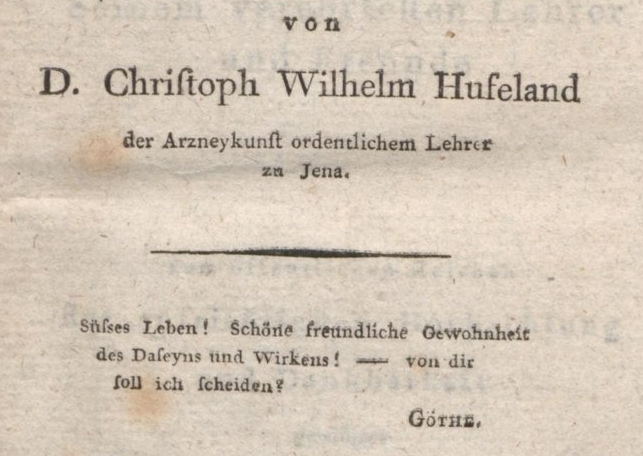Epigraphs
General Information
Epigraphs, i. e. adages at the beginning of a book, chapter or section, are tagged with the element <epigraph>. The actual epigraph text is given in paragraphs (<p>) if it is prose text. If it is an epigraph in verses, it is framed by the <lg> element (see chap. Quotes/Epigraphs as Groups of Verses).
Epigraph, which is not a Quote:
<epigraph> <p>[epigraph text]</p> </epigraph>
Epigraphs that are not Quotes

<epigraph> <p>Audiatur et altera pars.</p> </epigraph>
Source: Curtius, Georg: Zur Kritik der neuesten Sprachforschung. Leipzig, 1885. [Facsimile 98]
Quote as Epigraph without Naming the Author:
<epigraph>
<quote>[quotation text]</quote>
</epigraph>
Quote as Epigraph without Naming the Author

<epigraph> <quote>„De subjecto vetustissimo<lb/> novissimam promovemus scientiam.“</quote> </epigraph><lb/>
Source: Ebbinghaus, Hermann: Über das Gedächtnis. Leipzig, 1885. [Facsimile 9]
Quote as Epigraph with Naming the Author (Exemplary):
<epigraph> <cit> <quote>[quotation text]</quote> <bibl>[author of the quote]</bibl> </cit> </epigraph>
Quote as Epigraph with Naming the Author

<epigraph>
<cit>
<quote>Süſses Leben! Schöne freundliche Gewohnheit<lb/>
des Daſeyns und Wirkens! — von dir<lb/>
ſoll ich ſcheiden?</quote>
<lb/>
<bibl><hi rendition="#k">Göthe</hi>,</bibl>
</cit>
</epigraph><lb/>